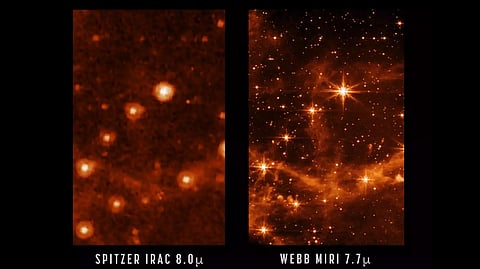

CHENNAI: We may finally have a glimpse of what the first few operational photographs from the James Webb Space Telescope will look like before NASA releases the first full-colour images and spectroscopic data. According to NASA administrator Bill Nelson, the first images from the $10 billion deep-space observatory will feature "the deepest image of our universe that has ever been taken."
The image, according to reports, will reportedly depict some of the earliest objects yet seen, even though NASA did not identify which early-universe objects Webb will focus on. This implies that we would observe objects that are older than those found in the deep image fields produced by the Hubble Space Telescope, which depict galaxies that formed as recently as a few hundred million years after the Big Bang.
At a news conference held at the Space Telescope Science Institute in Baltimore, Nelson was speaking. Webb's upcoming operational image releases on July 12 and the various research investigations that will be carried out using the observatory during its early years were both topics of discussion during the presentation by NASA.
According to Thomas Zurbuchen, assistant administrator at NASA's scientific mission directorate, who spoke at the same ceremony, the first batch of photos will also include Webb's first spectrum of an exoplanet. These spectra can be used to measure the amount of light emitted at specific wavelengths, which can reveal information about a planet's chemistry and formation process.
The same group of stars were photographed by the Spitzer Space Telescope's Infrared Array and the Webb Space Telescope's MIRI (Mid-Infrared Instrument). A portion of the Milky Way's small satellite galaxy, the Large Magellanic Cloud, which has a dense star field, is seen in the test image.
Although Spitzer, which was shut down on January 30, 2020, was in charge of several significant scientific discoveries, it has since been surpassed by Webb's superior imaging system. Webb is able to take photos with higher resolution and better clarity than Spitzer because of its substantially larger primary mirror and upgraded detectors.
Visit news.dtnext.in to explore our interactive epaper!
Download the DT Next app for more exciting features!
Click here for iOS
Click here for Android